Introduction
Budae Jjigae, often translated as “army base stew,” is a vibrant and hearty Korean dish that embodies the nation’s resilience, creativity, and ability to transform adversity into culinary gold. Born from the ashes of post-Korean War hardships, this stew combines unexpected ingredients—such as Spam, processed cheeses, and instant noodles—with traditional Korean flavors to create a dish that is both nostalgic and universally beloved. Today, Budae Jjigae is more than just a meal; it is a symbol of Korean adaptability and a testament to how food can bridge cultural divides. This article explores the origins, ingredients, preparation, and cultural significance of Budae Jjigae, offering a deeper understanding of why this dish continues to captivate taste buds worldwide.
Historical Roots: From Scarcity to Culinary Triumph
The story of Budae Jjigae begins in the aftermath of the Korean War (1950–1953), a period marked by widespread poverty and food shortages. South Korea, then rebuilding its economy, faced severe limitations in accessing basic provisions. Meanwhile, U.S. military bases dotted the country, and surplus rations—including canned meats, cheeses, and processed goods—were distributed to local communities. Resourceful Koreans, determined to feed their families, began experimenting with these non-traditional ingredients, blending them with local staples like kimchi, gochujang (fermented chili paste), and vegetables.
The result was a stew that defied conventional culinary norms. Initially dismissed as a “poor man’s dish,” Budae Jjigae gained popularity in towns near U.S. bases, such as Uijeongbu and Pyongtaek, where access to imported goods was more frequent. Over time, the stew evolved from a symbol of hardship to a point of national pride, celebrated for its ability to merge disparate cultures through flavor.
Ingredients: A Fusion of East and West
What sets Budae Jjigae apart is its eclectic mix of ingredients, which reflect the historical collision of Korean and Western influences. While recipes vary, the core components typically include:
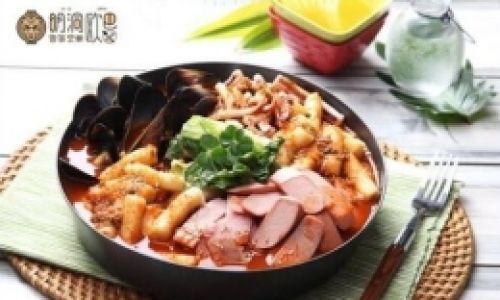
-
Proteins:
- Spam or Canned Ham: A legacy of U.S. rations, these salty, fatty meats provide a savory base.
- Hot Dogs or Sausages: Often sliced into bite-sized pieces, they add smokiness and texture.
- Kimchi: Fermented napa cabbage, aged to perfection, contributes tanginess and depth.
- Tofu: Silken or firm tofu absorbs the broth’s flavors, adding a creamy contrast.
-
Broth and Seasonings:
- Anchovy or Beef Stock: Forms the stew’s savory foundation.
- Gochujang and Gochugaru: Fermented chili paste and flakes impart heat and color.
- Soy Sauce and Garlic: Enhance umami and aromatic complexity.
-
Carbohydrates:
- Instant Ramen Noodles: Cooked directly in the stew, they soften into chewy, flavor-packed strands.
- Rice Cakes (Tteok): Chewy cylindrical rice cakes add a satisfying bite.
-
Vegetables and Add-Ons:

- Mushrooms, Onions, and Scallions: Fresh produce balances the richness.
- Baked Beans or Canned Baked Beans: A nod to Western camping cuisine.
- Processed Cheese: Melted on top, it creates a luxurious, gooey layer.
Modern adaptations may include seafood, bacon, or even ramen eggs, showcasing the stew’s adaptability.
The Art of Preparation: Building Layers of Flavor
Cooking Budae Jjigae is a communal experience, often done at the table using a portable burner. The process is as follows:
-
Broth Base:
In a shallow, wide pot, combine anchovy stock, gochujang, soy sauce, garlic, and a splash of kimchi brine. Bring to a simmer. -
Layering Ingredients:
Arrange the proteins and vegetables in concentric circles: kimchi at the center, surrounded by Spam, sausages, tofu, and mushrooms. Add rice cakes and baked beans last.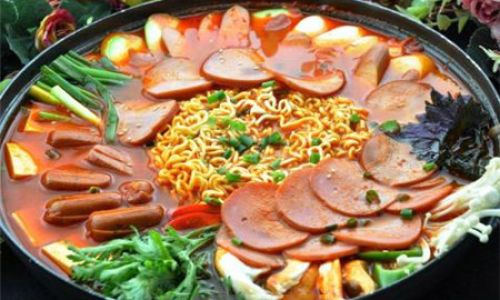
-
Noodle Integration:
Place instant ramen noodles on top, submerging them slightly in the broth. -
Cheese Melting:
Cover the stew with slices of processed cheese, which melt into a golden, stretchy blanket. -
Simmering:
Let the stew bubble gently for 10–15 minutes, allowing flavors to meld. -
Serving:
Serve piping hot, with steamed rice, pickled radish, and a side of soju or beer.
The result is a symphony of textures and tastes: spicy, salty, sweet, and umami-rich, with each bite telling a story of survival and innovation.
Cultural Significance: More Than Just a Meal
Budae Jjigae’s popularity extends beyond its flavor—it is a cultural icon. For older generations, it evokes memories of resilience during tough times. For younger Koreans, it represents a fusion of global and local identities, reflecting South Korea’s modernity. The dish’s communal preparation and sharing also reinforce family bonds and friendship, making it a staple at gatherings, birthdays, and late-night hangouts.
In recent years, Budae Jjigae has transcended its humble origins to become a global sensation. Korean BBQ restaurants worldwide now feature it on menus, often with creative twists like adding bulgogi or mozzarella. Food bloggers and chefs praise its balance of comfort and complexity, while tourists flock to Seoul’s “Budae Jjigae Streets” to savor authentic versions.
Variations and Modern Adaptations
While traditional Budae Jjigae remains beloved, contemporary chefs have embraced the dish as a canvas for experimentation:
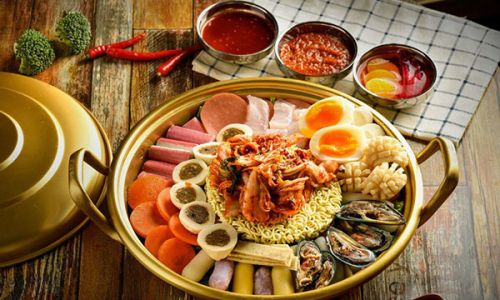
- Vegetarian/Vegan Versions: Replace Spam with plant-based proteins and use vegetable stock.
- Seafood Twists: Add shrimp, squid, or clams for a briny kick.
- Fusion Styles: Incorporate ingredients like udon noodles, teriyaki-glazed tofu, or even chorizo.
- Gourmet Upgrades: Use artisanal kimchi, house-made broth, and premium cheeses for elevated flavors.
These adaptations highlight the stew’s versatility, proving that its core ethos—resourcefulness and innovation—remains timeless.
Conclusion: A Dish That Tells a Story
Budae Jjigae is not merely a stew; it is a living archive of Korean history and a celebration of culinary ingenuity. From its origins in post-war scarcity to its current status as a global comfort food, this dish embodies the Korean spirit of turning challenges into opportunities. Whether enjoyed in a bustling Seoul market or a cozy home kitchen, Budae Jjigae invites diners to savor a flavorful narrative—one of resilience, fusion, and the enduring power of sharing a meal. As the world continues to embrace Korean cuisine, Budae Jjigae stands as a reminder that even the most unlikely ingredients can come together to create something truly extraordinary.


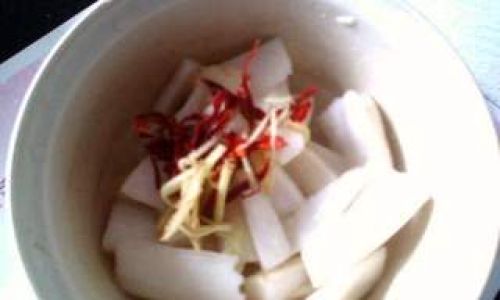
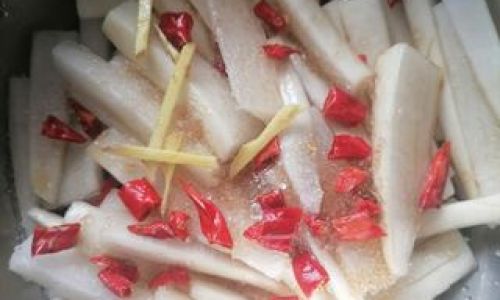
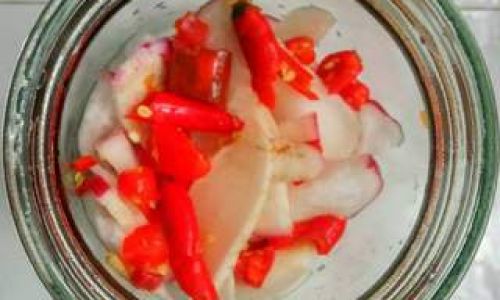
0 comments